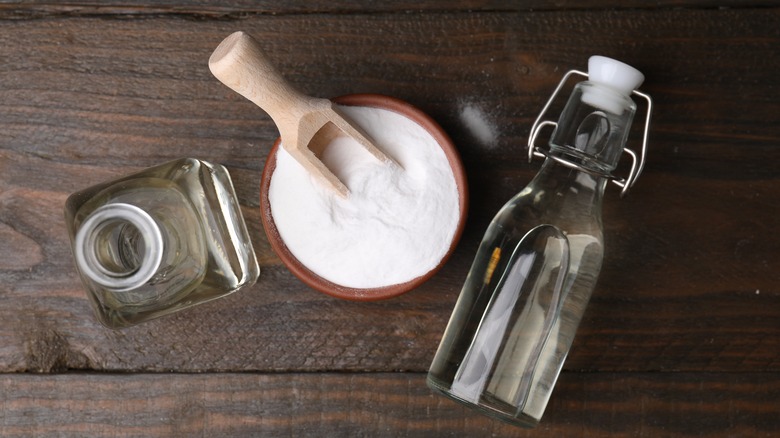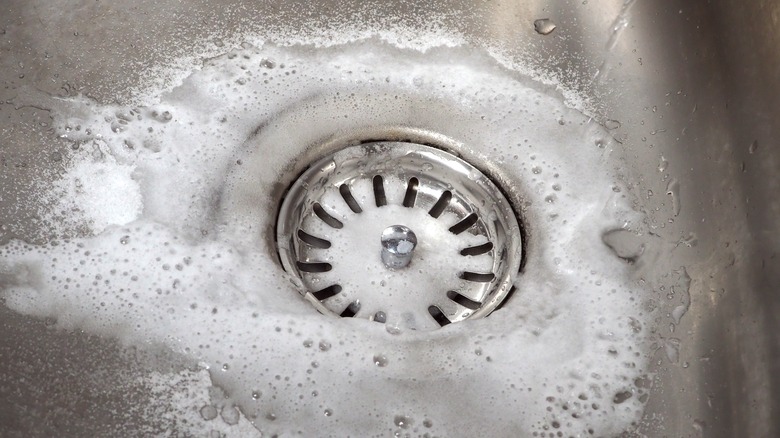Why You Should Avoid Mixing Baking Soda And Vinegar When Cleaning
Baking soda and vinegar are well-known natural cleaning agents, and the fact that they're easily accessible as common pantry ingredients makes them even more popular. They work pretty well independently: Baking soda, a base, is an effective degreaser, while vinegar, a weak acid, is excellent at cutting through and removing mineral deposits formed by hard water, like when cleaning an electric kettle. However, some people encourage mixing the two for a better cleaning experience, but that recommendation is not super helpful.
By mixing an acid and a base, the two neutralize each other instead of enhancing each other's abilities. The mixture you create in the end won't have the extraordinary cleaning power you hoped for, and there's a scientific explanation for it. When combined, the acetic acid in vinegar gives off one of its hydrogen protons to the base (sodium bicarbonate) and creates carbonic acid and salt. Since carbonic acid isn't that stable, it ultimately breaks down into water and carbon dioxide gas. The gas is released into the air, and that's what causes the mixture to bubble for some time until all the carbon dioxide is gone. So technically what you create by combining baking soda and vinegar is a mix of carbon dioxide (that's inevitably released into the atmosphere), water, and salt. As you might guess, salty water isn't really a superior cleaning agent. That's why you should avoid mixing these two compounds when cleaning.
The only way to use baking soda and vinegar mixture when cleaning
That said, there's a way to benefit from the vinegar and baking soda combination, but first, you need to understand where its hidden cleaning power lies and then get the timing right. Now, this mixture only works as a potent cleaner during its bubbling phase, when carbon dioxide is formed and released into the atmosphere. The entire process of the bubbles forming, enlarging, and then bursting, causes it to manually lift gunk and therefore clean whichever surface the mixture is on. This is where proper timing comes in.
You'll need to use the baking soda-plus-vinegar solution immediately after mixing it while it's still foaming — don't leave it to sit in a bottle to be used later. The only way to get this timing right is to mix the two compounds directly on the surface you want to clean. For example, pour fresh baking soda on the garbage disposal opening then add the vinegar so it fizzes as it goes down the drain and cleans the inside of the garbage disposal. So with such a short window period in which you can benefit from this mixture, it goes to show that you're better off using the compounds separately so you can maximize their individual cleaning abilities.

